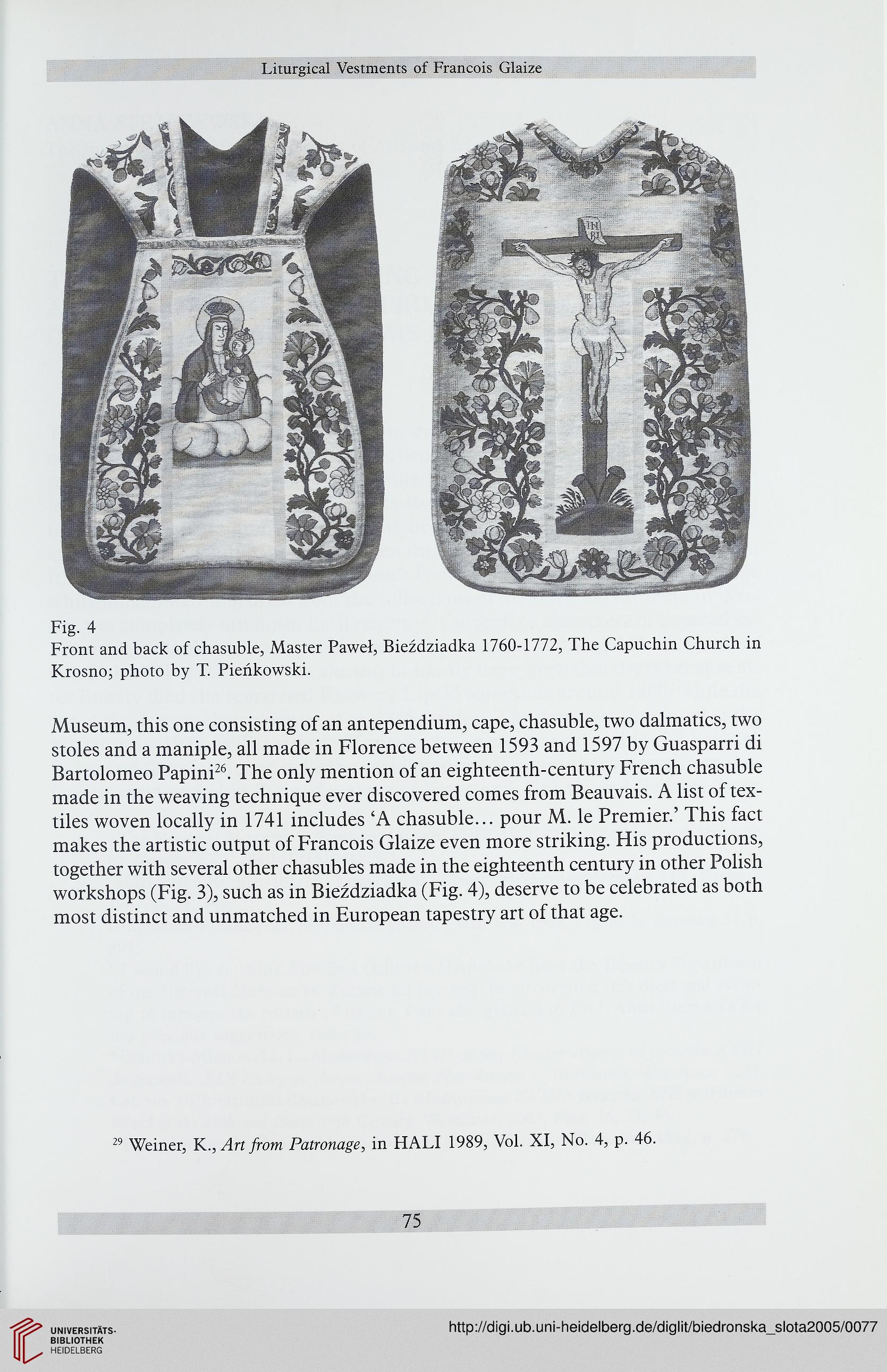Liturgical Yestments of Francois Glaize
Fig. 4
Front and back of chasuble, Master Paweł, Bieździadka 1760-1772, The Capuchin Church in
Krosno; photo by T. Pieńkowski.
Museum, this one consisting of an antependium, cape, chasuble, two dalmatics, two
stoles and a maniple, all made in Florence between 1593 and 1597 by Guasparri di
Bartolomeo Papini26. The only mention of an eighteenth-century French chasuble
made in the weaving techniąue ever discovered comes from Beauvais. A list of tex-
tiles woven locally in 1741 includes 'A chasuble... pour M. le Premier.' This fact
makes the artistic output of Francois Glaize even more striking. His productions,
together with several other chasubles made in the eighteenth century in other Polish
workshops (Fig. 3), such as in Bieździadka (Fig. 4), deserve to be celebrated as both
most distinct and unmatched in European tapestry art of that age.
Weiner, K., Art from Patronage, in HALI 1989, Vol. XI, No. 4, p. 46.
75
Fig. 4
Front and back of chasuble, Master Paweł, Bieździadka 1760-1772, The Capuchin Church in
Krosno; photo by T. Pieńkowski.
Museum, this one consisting of an antependium, cape, chasuble, two dalmatics, two
stoles and a maniple, all made in Florence between 1593 and 1597 by Guasparri di
Bartolomeo Papini26. The only mention of an eighteenth-century French chasuble
made in the weaving techniąue ever discovered comes from Beauvais. A list of tex-
tiles woven locally in 1741 includes 'A chasuble... pour M. le Premier.' This fact
makes the artistic output of Francois Glaize even more striking. His productions,
together with several other chasubles made in the eighteenth century in other Polish
workshops (Fig. 3), such as in Bieździadka (Fig. 4), deserve to be celebrated as both
most distinct and unmatched in European tapestry art of that age.
Weiner, K., Art from Patronage, in HALI 1989, Vol. XI, No. 4, p. 46.
75





